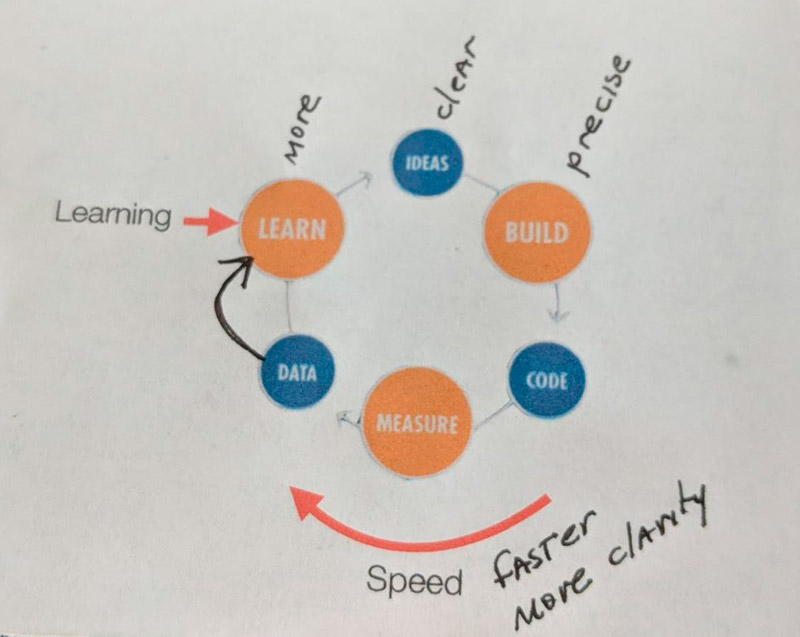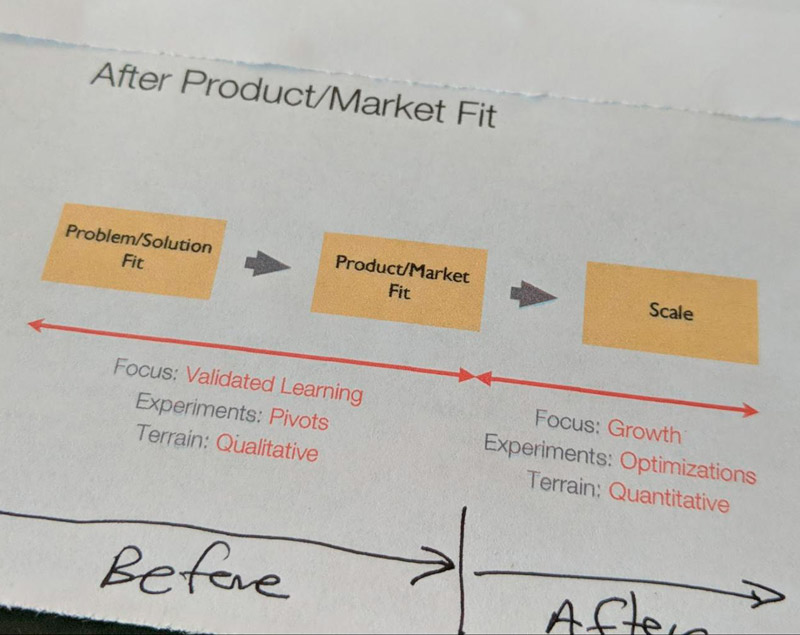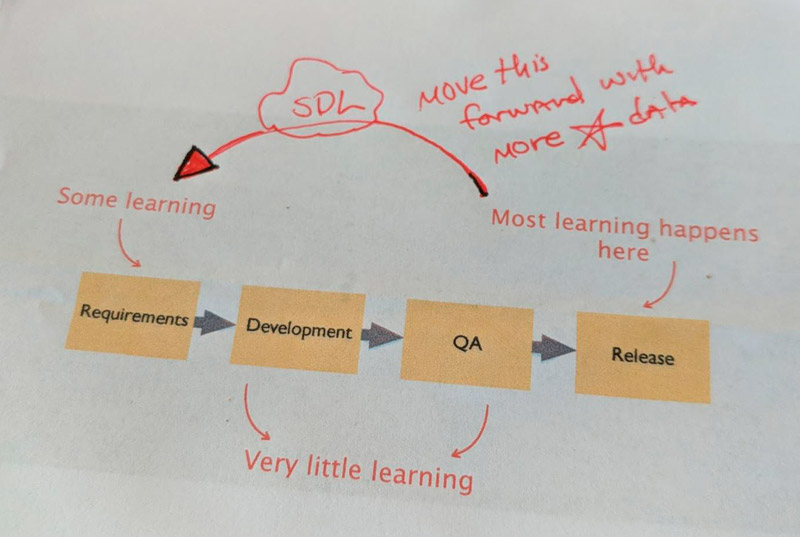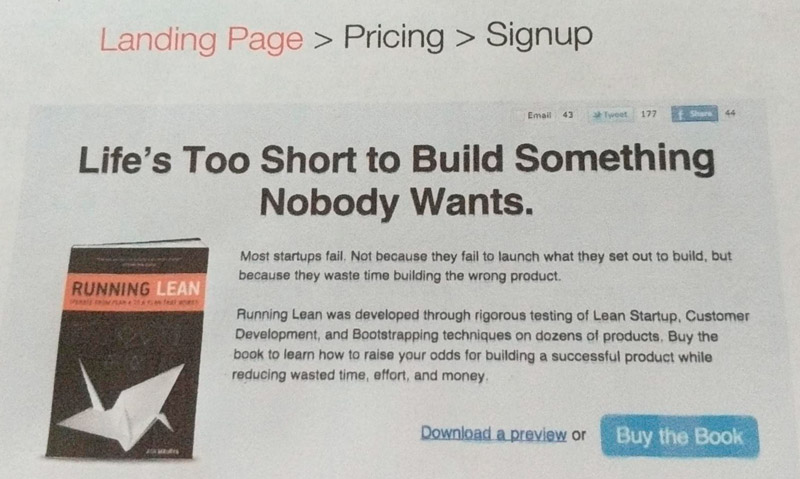Measured performance in an uncertain world
In reference to the above, when you’re going through this cycle the goal should be to learn more, have clear ideas that are based on quantifiable expectations of underserved needs. This allows you to build precisely. By doing these things ahead of time you will speed up the process. The code will go a lot faster because it has clarity. You will measure based on a precise definition of an audience.
One of the most interesting reads I have seen in a long time is from Ash Maurya. He has a book and process called ‘Running Lean’ which you can find at runningleanhq.com
Ash clarifies a product-market fit process in a simple yet intuitive way. It’s a pleasure to read his work and I suggest it.
Because he makes things so clear I found it useful to comment on some of his slides as the technology we invented fits neatly into his process.
To start with, his clarity around problem-solution fit and it’s conversion into product-market fit is well explained.
His clarity around the process of requirements to release is well done. During the requirement step his claim is only some learning takes place and most learning occurs after release. The technology we invented improves the ability to learn quite a bit in the requirements stage. Some of the learning that takes place only after you have a customer or a user can actually be done in the requirement stage. You end up saving development, QA, and release.
Segmenting customers before they’re ever customers by people traits and ‘why they make decisions’, ultimately figuring out the underserved needs helps define the requirements, the development and ultimately improves the expectations from the release.
Quantitative data can be introduced into the qualitative stage.
Our technology inserts well over 350 data points about segmented groups of customers based on their underserved needs during the qualitative stage. As Peter Drucker once said, ‘What’s measured gets improved’… something like that, right?.
If you’re measuring underserved needs in a quantitative way from the very beginning, you will seek to improve these things and not guess down the road.
What you are ultimately going to validate is the qualitative theories using trait calculations, which represent the underserved needs of people.
Mixing up things, having a foggy picture of why people want something creates confusion which is the enemy of trust.
At Stealth Dog Labs we are confident product-market fit can be improved by doing a few more things upfront. Ash delivers a great document that we fully support. He is right, life’s too short to build something nobody wants.





